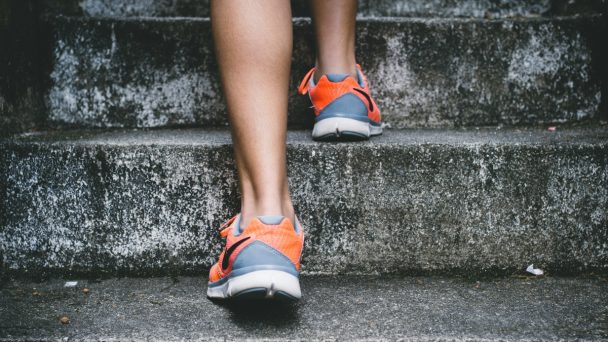Alcohol and traffic facts

Alcohol and traffic. They won't fool you anymore. Yet there is so much more to tell. We list the most important and interesting facts. Then you will soon be able to talk about alcohol campaigns, blowpipes and residual alcohol.
You don't drink more than two glasses of beer when you still have to drive. The same quota applies to bicycles. The fines for getting behind the wheel intoxicated vary from 'a lot of money' to 'a lot of money' or even recovery of your driver's license and a mandatory course. These strict regulations are there for a reason.
Fact: Every year 75 to 140 road accidents are caused by alcohol.
Because alcohol and traffic cannot go together, because of the high risk of road casualties, we have already seen several (Bob) alcohol campaigns. Let's refresh your memory:
- In 2001 the campaign 'Bob you or Bob ik?' started. This was the first campaign to promote awareness among motorists.
- In 2015, the slogan 'Are you Bob, say it out loud!' introduced. Of these, the main purpose was to also appeal to the lone rider, rather than just people traveling in groups.
- In 2019 the slogans started with 'Bob, even if you…', this is the most recent campaign released. Various activities can be completed on the dots. 'Bob, also when you go to a terrace', 'Bob, also when you visit a festival', 'Bob, also when you go to a garden party'. Few parties at the moment, but still.
Fun Fact: While many people think that "Bob" stands for "Conscious Intoxicated Driver," Bob isn't an abbreviation officially.
Born in Belgium
Did you know that the Bob campaign originated in Belgium? The campaign was launched there in 1995. Many other countries followed from 2001, including the Netherlands. The Bob campaigns have different goals.
- Raise awareness of the risks of driving under the influence of alcohol.
-Reduce the number of drivers under the influence of alcohol.
-That people decide before their first drink who is 'the Bob' within a group.
- That not drinking alcohol when traveling by car is also an option.
| The Bob campaign falls under the umbrella of 'Come home safely' of the Ministry of Infrastructure and Water Management, which, in addition to the Bob campaign, also includes the 'Mono' campaign and speed and bicycle lighting campaigns. |
Source: wikipedia.org
Alcolock
In 2001 the first alcohol interlock was a fact. In 2003, the government announced that the measure would be implemented soon. That 'fast' eventually became 2011. The alcolock program is for alcohol offenders who have been arrested in traffic with a blood alcohol level above 1.3 (about 6 to 7 glasses of alcohol) and below 1.8 (about 9 to 10 glasses of alcohol). The Supreme Court has now decided that an alcohol interlock may no longer be imposed (March 2015).
What did the alcohol interlock measure entail? The alcohol interlock is an administrative measure that you can participate in voluntarily and that is imposed in addition to the penalties imposed by the judiciary. For example, it is possible that someone is banned from driving for six months and receives a fine of € 1000, - and only then is allowed to start the alcolock program. If you do not want an alcolock or you cannot pay the costs for it or if you do not have a car yourself, you are not allowed to drive for five years. Source: wikipedia.org.
blowpipe
In the 1960s, Safe Traffic Netherlands drew attention to the alcohol problem in traffic. As a result, on November 1, 1974, the anti-alcohol law came into effect. In which a maximum permitted blood alcohol level of 0.5 was established. The police conducted alcohol checks using blowpipes. Source: nos.nl
A blowpipe is a tube in which the yellow potassium dichromate is placed. Swabs, cotton, or something similar are tucked into both sides of the tube. When potassium dichromate comes into contact with ethanol, the green chromium(III) sulphate is formed. In this way alcohol consumption can be demonstrated.
Fun fact: In the 1980s, chemical blowpipes were replaced with breath testers.
blower
A breathalyzer with which you do a breathalyzer measures the concentration of alcohol in a person's blood on the basis of their breath. Blowers are quite sensitive to temperature. There are also all kinds of sandwich monkey stories about how to trick a blower. The fact is, if you don't cooperate with a breathalyzer, or sabotage one, you're committing a crime.
residual alcohol
After a pleasant evening during which the drink flowed freely, you want to get into the car after a (short) night's sleep. Is that allowed?
We are dealing here with residual alcohol. You are not always aware of the fact that you may still have too much alcohol in your blood to be allowed to drive. In healthy people, the liver breaks down the alcohol at a rate of 1 to 1.5 hours per catering glass.
Example: when a person has drunk 7 catering glasses of alcohol, this means that all alcohol has only disappeared from the body after 7 to 10 hours. With 15 glasses consumed, this increases to 15 to 22.5 hours, so you are under the influence well into the next day.
| What is a catering glass?
A catering glass can be a beer glass of 225 ml, a wine glass of 100 ml, or a shot glass of 35 ml. Due to the different percentages of alcohol in the drinks, it appears that there is always about 12 ml of pure alcohol in them. |
Source: wikipedia.org


